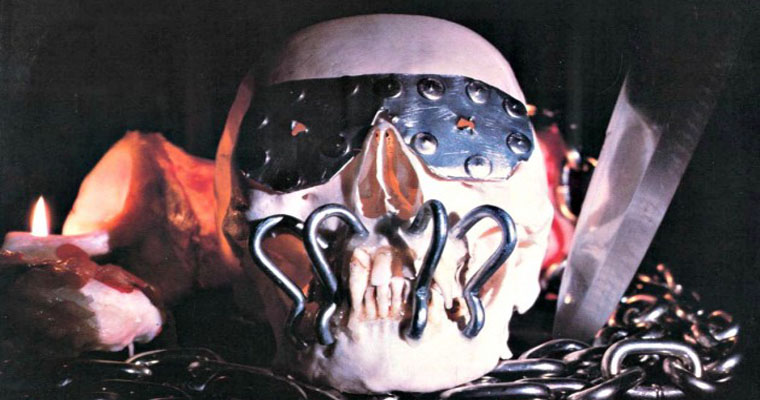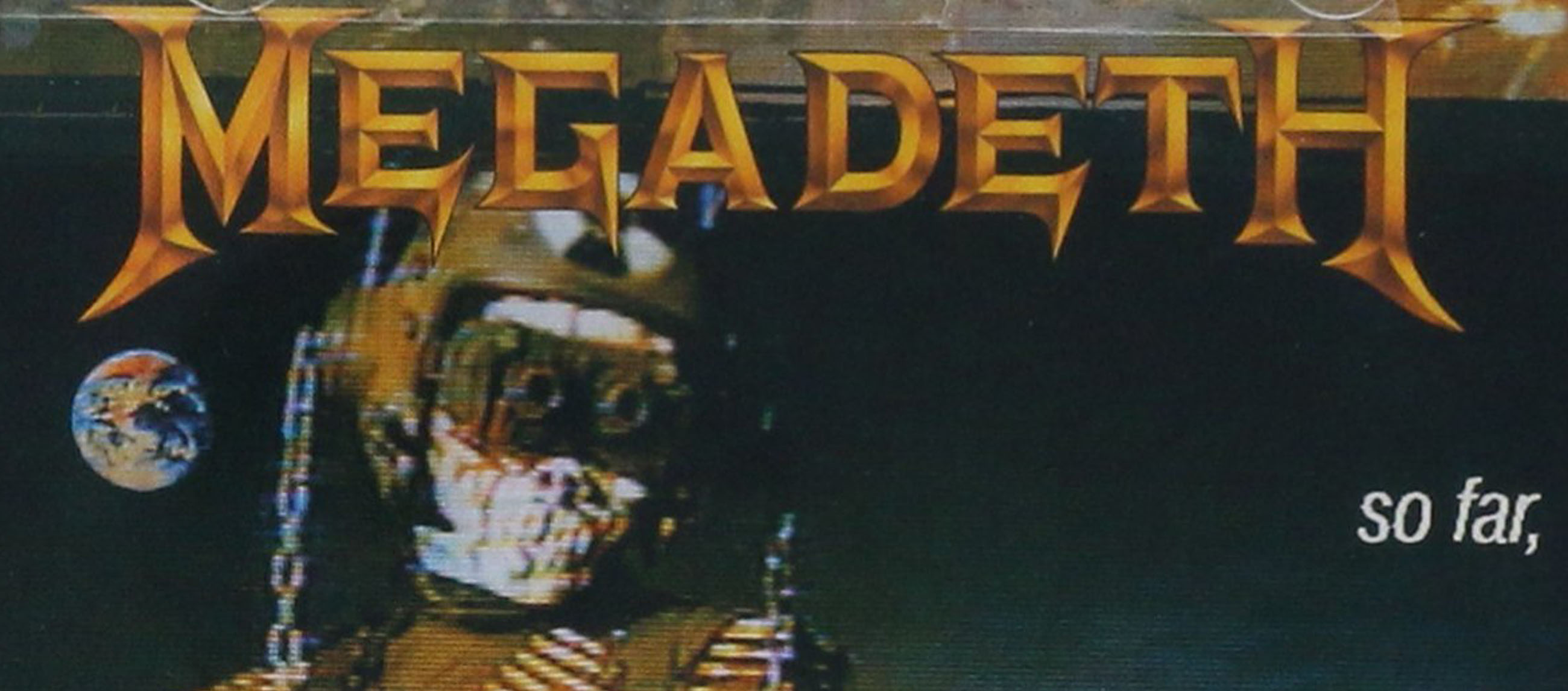
30 Years Ago: Megadeth Unleash ‘Killing Is My Business… And Business Is Good’ Read More: 30 Years Ago: Megadeth Unleash ‘Killing Is My Business..
Source - Loudwire:
Anyone who was around New York in 1983 when Metallica fired Dave Mustaine, drove him to the bus station and sent him on his way back to California without a handshake probably couldn’t imagine the fiery guitarist bouncing back soon after with a new band, Megadeth. He would go on to release one of the best thrash debuts ever, along with Metallica’s Kill ‘Em All, Exodus’ Bonded by Blood and Slayer’s Show No Mercy.
Killing Is My Business… And Business Is Good!, which came out June 12, 1985, is fast and raw, with a jazzy swing that compliments Mustaine and Chris Poland’s angular guitar riffs and blazing leads. Part of what made the album so intense was Mustaine’s effort to prove that Megadeth wouldn’t play second fiddle to Metallica or anyone else. The living conditions band members suffered through when they worked on the songs only added salt to Mustaine’s ever-open wound. If the band sounds pained it’s because they were, both physically and emotionally. For much of the time, they had no place to live and often crashed in their ventilation-free studio, which had no bathroom and no running water. Sometimes they slept in cars on the street.
“The only time we could shower was when someone that was managing us would take us to the gym,” Mustaine told me in 1999. “But no matter what happened, we refused to quit or give in.”
Another obstacle to the band was drugs. While Mustaine was capable of writing under the influence, his habit and those of his band mates took its toll on their bottom line. No sooner did Combat Records give Megadeth $8,000 to record their album than the musicians blew it on dope. When they told the label they’d need another $4,000 to record a quality album, the company coughed up more cash and that, too, quickly disappeared.
“It was ridiculous,” Mustaine said. “Every time we turned around, Chris and [drummer] Gar Samuelson would pawn some of our equipment for heroin.”
Through their haze, Megadeth still managed to rehearse and record an incredibly tight batch of tunes, including a thrash version of Nancy Sinatra’s “These Boots” with modified lyrics and “The Mechanix,” a Mustaine song that originally appeared on Metallica’s legendary “No Life ‘Til Leather’ demo. Metallica, meanwhile, had slowed down the tune and used it as the skeleton for their “Kill ‘Em All” track “The Four Horsemen.”
“I wrote all the music for ‘The Four Horsemen,’ Mustaine said, “and James [Hetfield] wrote the lyrics and actually, part of the lyrics was based on a concept I had. I can’t tell you how they felt about it, but I know how I felt about it because when I was asked to leave I said, ‘Don’t use any of my stuff!’ And then Kill ‘Em All came out.”
From the start, Mustaine had an axe to grind with his former bandmates. As he rapidly chances chord sequences and meters from one song to the next you can almost hear him thinking, “Let’s see those f—ers can do something as good as this!”
“Dave came to the first Country Club show Anthrax played with Raven in Los Angeles,” Anthrax guitarist Scott Ian said in interviews for his memoir I’m the Man: The Story of That Guy From Anthrax. “ He had only been out of Metallica a little while and he already had demos for ‘The Skull Beneath the Skin,’ the title track and ‘Last Rites/Loved to Deth.’ I said, “Dude, this is amazing!” and he joked, “Right, right, I f—ing rule! Those guys kicked me out of the band. I’ll show them!”
Unfortunately, since Megadeth wasted almost their entire budget, they had no money left to pay a producer, so they worked with their friend Karat Faye, who had produced the demo that got them signed. They tracked Killing Is My Business… in a month, from December, 1984 to January 1985 at Indigo Ranch Studios in Malibu, Calif. Sonically, Killing Is My Business… suffered from second-rate production, which is a shame because the songs were solid as steel.
“Last Rites/Loved to Deth” is a galloping double-bass thrasher with an offbeat, acrobatic main riff, while the title track is a more straightforward scream-along anthem that paved the way for “Peace Sells.” “Rattlehead” is an injection of speed with a serpentine passage that circles the main riff and a mid-song mosh part. “The Skull Beneath The Skin” features guitar work that’s the aural equivalent of a rapidly woven spider web and “Looking Down the Cross” opens with dissonant minor key harmonics and a flashy lead pattern that sounds like video game effects before building into a doomy mid-paced pounder.
In addition to having inferior sound, Killing Is My Business … was hampered by silly cover art: a plastic skull with tinfoil shades bolted to its head and metal hooks locking its jaw shut. Originally, Mustaine had given the label some sketches of a much sleeker looking skull bound in chains and surrounded by crossbones and blades, but the company lost the drawings and did its best to replicate the theme with found objects. Everyone in the band hated it. (In 2002, Killing Is My Business… was reissued with new artwork based on Mustaine’s original design.) That wasn’t the only modification. When Lee Hazelwood, who penned the original “These Boots,” took offense to Mustaine’s raunchy revamp of the lyrics, he threatened to sue. So the band pulled the song from all copies printed after 1995. The reissue re-inserted “These Boots” into the track list, but with bleeps over all of the rewritten passages.
While Killing Is My Businesss… didn’t hit the Billboard album chart due to limited distribution, it was still one of Combat’s biggest sellers and attracted enough attention for Capitol Records to sign Megadeth to a long-term deal that included their second album Peace Sells… But Who’s Buying?, the band’s first platinum record. It would take a while before the band members kicked their addictions to drugs and alcohol, but at least they didn’t have to live on the street from that point on.
Loudwire contributor Jon Wiederhorn is the co-author of Louder Than Hell: The Definitive Oral History of Metal, as well as the co-author of Scott Ian’s autobiography, I’m the Man: The Story of That Guy From Anthrax, and Al Jourgensen’s autobiography, Ministry: The Lost Gospels According to Al Jourgensen.
Source: Loudwire






No Comments